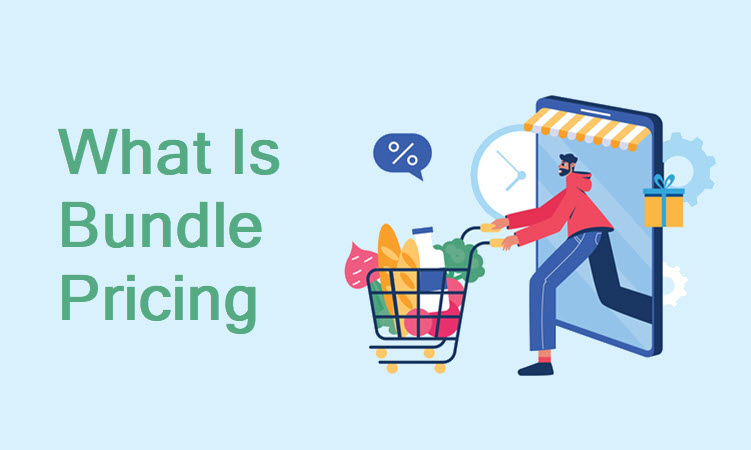Customers are always searching for better shopping deals that will satisfy their needs and save them money. Merchants employ various pricing strategies to attract customers to their products. Bundle pricing (often referred to as price bundling) is an attractive pricing method which contributes to increased sales and more profits for ecommerce businesses.
In this article, learn about the bundle pricing method, its benefits, and the best ways to implement it in your pricing strategy.
What Is Bundle Pricing?
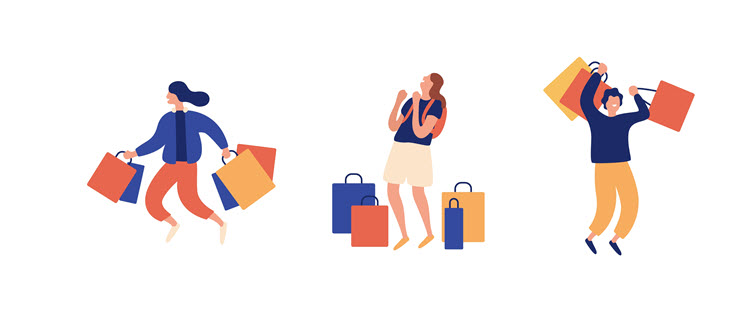
Bundle pricing means selling several related products or services together for a price lower than the aggregated cost of each item. It is a great strategy for companies that sell related products or services that complement each other. Customers appreciate the improved functionalities they receive and perceive the company as providing more value for their money.
The most common example of bundle pricing is found in restaurant meal sets. A restaurant might offer a starter, main course, and dessert for a price that is lower than all three courses purchased separately.
Note: Establishing a sound pricing strategy can make or break a business. Learn more about tiered pricing vs. volume pricing and value-based pricing, some of the most common pricing methods.
Bundle Pricing Types and Examples
There are two common bundle pricing types.
Pure Bundling
Pure bundling is a pricing method where customers have the option to either buy the bundle as is or not at all. There are two subtypes of pure bundling:
- Leader bundling. This bundling method relies on the popularity of a leader product to draw customers. Accompanying the leader product in the bundle are lesser-value products that accessorize or add functionalities to the main product.
- Joint bundling. This bundling strategy offers two or more products of similar value for a single price. Customers are not given the option to purchase a single product. Software companies frequently use this method to sell their products and services.
Mixed or Custom Bundling
Mixed bundling gives customers the option to customize their bundle by taking out or adding different products. All the products are also available for purchase as individual items. There is one subtype of custom bundling:
- Mixed leader bundling. Like leader bundling, this type of bundle pricing tactic has one main product which attracts customers. It differs from leader bundling in that buyers can opt to purchase the leader item separately or as part of a bundle.
Bundle Pricing Examples
Here are several examples of bundle pricing that rely on cross-selling and upselling strategies:
1. HP’s Photo Printing Bundle
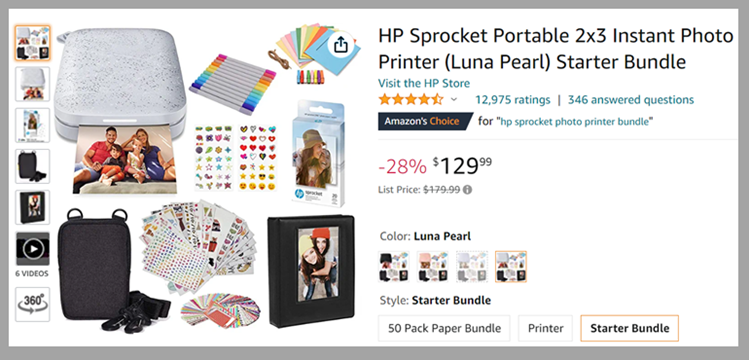
Bundle pricing type: Mixed leader bundling
In this example, the leader product is the instant photo printer. The seller offers a starter bundle with accessories for printing photos, such as sheets, decoration stickers, and colorful paper, as well as a bag for carrying the printer. Other options include buying the printer with a 50-pack printing paper bundle or purchasing the printer without any accessories.
This strategy provides customers the flexibility to decide what they need while allowing them to easily purchase functional and attractive add-ons.
2. KitchenAid Hand Blender
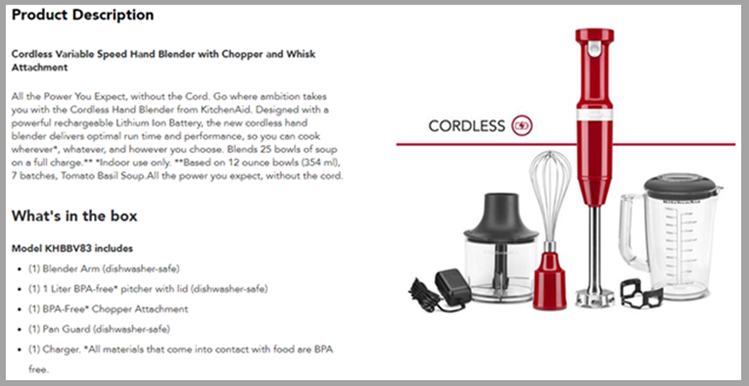
Bundle pricing type: Leader bundling
Customers looking for hand blenders will be enticed by the add-ons that KitchenAid offers with their lead product. The kitchen appliance company upgrades its standard offer of hand blenders by adding functional accessories such as a whisk, chopper attachment, and large pitcher.
3. Microsoft 365
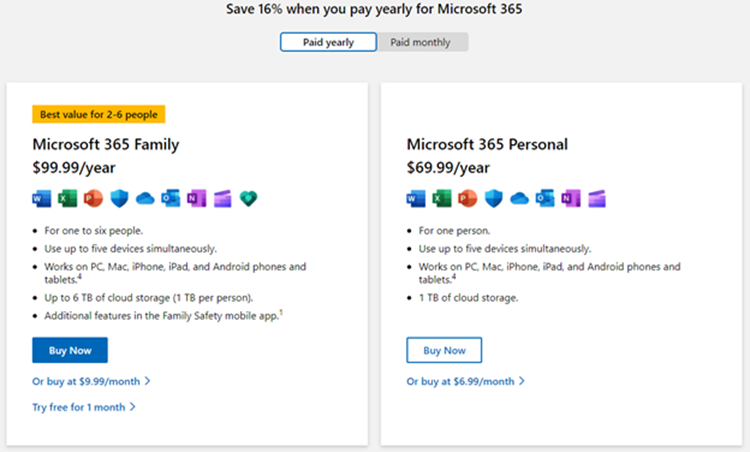
Customers cannot buy individual Microsoft Office programs such as Word or PowerPoint. With a single purchase, they receive access to a suite of programs that the software giant offers, without the possibility of picking only the ones they are likely to use the most.
Microsoft wisely chose to bundle their Office apps into a single package. They offer add-ons like cloud storage and other additional features to provide extra value.
4. bareMinerals Customizable Makeup Set
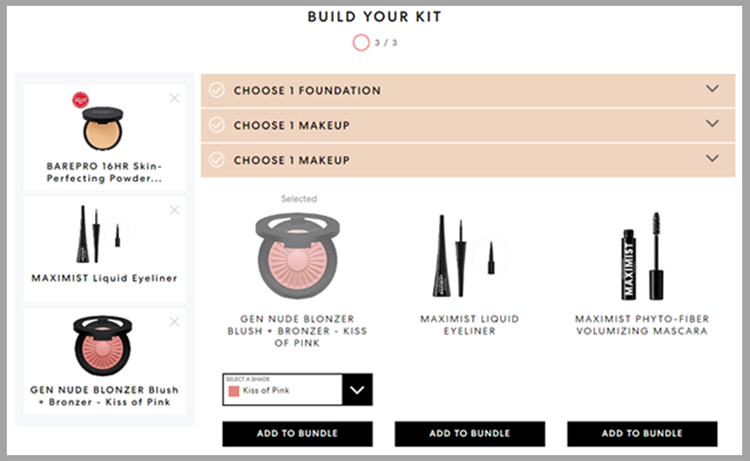
Bundle pricing type: Custom bundling
The bareMinerals cosmetics company allows its customers to create their own makeup bundles according to their skin tone and preferences. The total price of the bundle amounts to less than if the products are bought individually, providing the buyers with the feeling that they have found a good bargain.
Bundle Pricing Pros and Cons
Here are the benefits of using bundle pricing for your business:
- Simplifies the shopping experience. If offered a bundle, the customer will not have to spend time researching individual product pages or looking for accessories to match the desired product. Eliminating customer indecision and the feeling of being overwhelmed with options improves conversion and reduces the likelihood of abandoned carts.
- Boosts the popularity of new or slow-moving products. Bundle pricing is a great solution for introducing a new product or getting rid of an unpopular product. By including them with a more popular product as the leader, it will boost customers’ interest to purchase these products even if they did not initially plan to.
- Attracts new type of a customer. Bundle pricing is particularly attractive to customers who put saving money above everything else. People on the lookout for special deals will jump at the chance to purchase a bundle if they believe it will save them a few dollars.
- Increases customers spending. Your customers will be encouraged to spend more than they initially planned if the bundle offers attractive accessories.
- Decreases promotional costs. Advertising products as a bundle saves money that would be spent on promoting individual products.
- Allows for personalization. Custom bundling allows buyers to personalize their bundles by adding or removing products. Customers appreciate having the final say on what they purchase and the amount of money they spend.
Bundling also comes with a set of disadvantages that merchants should be aware of:
- May provide a bad customer experience. Some customers only wish to buy a single product from a bundle and do not want to pay for something they do not need. If a company does not provide them with the flexibility to do so, prospects will take their business to companies that provide them with buying autonomy.
- May lead to profit stagnation. This happens when high-margin products are offered in bundles for a lower price than when sold individually. Customers will seize the opportunity to purchase the item for a lower price, eating into the profit that could be made by selling the product on its own.
- Affects the perception of your business. If a company only puts unpopular products in their bundles, customers will notice. They may even feel like they’re overpaying for the bundle. This negative perception can be avoided with smart marketing that highlights the products’ features.
- May contribute to abandoned carts. With customized bundling, presenting customers with too many options has its downsides. The more choices they have, the more difficult customers will find it to make a decision, increasing the likelihood of abandoning the purchase altogether.
Note: Cart abandonment can seriously hurt a business’s bottom line. Explore these 17 ways to reduce cart abandonment.
How to Create and Use Bundle Pricing

Merchants wishing to create a successful bundle pricing strategy should keep these best practices in mind.
1. Learn What Your Customers Want
You need to learn about your customers’ interests to sell them something. With bundle pricing, it is important to include not only products customers need and like, but also products that complement and enhance each other.
2. Build Your Bundle Around a Best-seller
Highly attractive, best-selling products entice customers to buy a bundle. The resulting customer satisfaction leads to repeat purchases and increased profits.
3. Chose Accessories Carefully
Thoughtfully selected accessories increase the perceived value of the lead product, encouraging customers to grab the deal.
4. Highlight the Savings
If the bundle comes with savings, make sure to display this information prominently. Nothing attracts customers to bundles more than a bargain.
5. Offer Bundles at Checkout
By the time they reach the checkout, customers have already committed to making a purchase. A well-crafted bundle encourages customers to spend just a little more.
6. Leverage Upselling and Cross-selling
Bundles are a great upselling and cross-selling opportunity. For example, if a customer is buying a coffee maker, offer them a bundle that also contains coffee filters, capsules, or pods (cross-selling) or a newer model of a coffee maker with better features (upselling).
Conclusion
Bundle pricing is a great way to attract new customers and keep old ones. It relies on offering buyers affordable package deals, simplifying the shopping experience, and adding value to your brand while increasing sales and profits.
